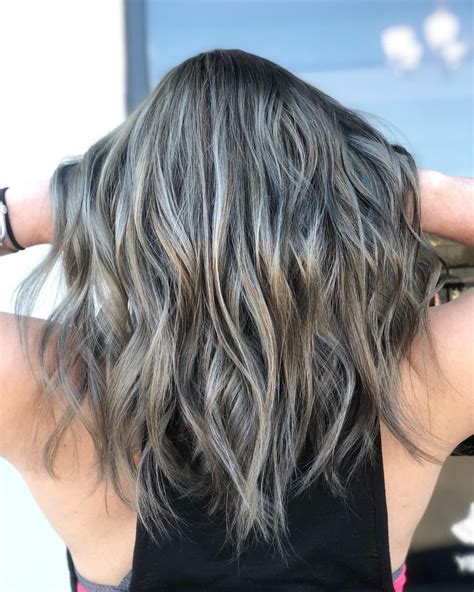Discover safe and natural postpartum hair care tips, including professional advice and precautions for using dye options. Understand the risks and safety measures.
Understanding the Risks
Contents
When it comes to dyeing hair while pregnant, it is essential to understand the potential risks associated with this process. While there are conflicting opinions on the subject, it is generally advised to err on the side of caution in order to ensure the safety of both the mother and the unborn child. Research has shown that certain chemicals found in hair dyes could potentially be absorbed through the skin and into the bloodstream, posing a potential risk to the developing fetus.
Additionally, the fumes from hair dye could also be harmful when inhaled, especially in poorly ventilated areas. Exposure to these chemicals has been linked to potential developmental issues in the fetus, making it crucial for pregnant women to consider the risks before dyeing their hair.
Furthermore, the hormonal changes that occur during pregnancy can affect the way that the body reacts to certain chemicals, potentially increasing the risk of adverse reactions to hair dye. It is important for pregnant women to consult their healthcare provider before undergoing any hair dyeing process to ensure that they understand and carefully consider the potential risks involved.
Ultimately, understanding the risks associated with dyeing hair while pregnant is crucial for making an informed decision about this process. By being aware of the potential hazards and consulting with a healthcare professional, pregnant women can take the necessary precautions to prioritize the safety and well-being of themselves and their unborn child.
Professional Consultation and Advice
When considering dyeing your hair during pregnancy, it is important to seek professional consultation and advice before proceeding. A qualified hair stylist or dermatologist can provide valuable information about the potential risks and safe options for dyeing hair while pregnant. They can assess your individual situation and provide personalized recommendations based on your specific health and pregnancy status.
It is crucial to communicate openly with your healthcare provider about your desire to dye your hair during pregnancy. Your doctor can offer guidance and address any concerns you may have about the potential effects of hair dye on your baby or your health. They can help you make an informed decision based on your unique medical history and pregnancy condition.
Seeking professional consultation and advice is especially important if you have any pre-existing medical conditions or complications with your pregnancy. Certain health issues may require additional precautions or alternative hair dye options to minimize potential risks. Your healthcare provider can provide tailored recommendations to ensure the safety of both you and your baby.
Additionally, consulting with a hair stylist who specializes in pregnancy-safe hair dye products can provide valuable insight into the best options for dyeing your hair while pregnant. They can recommend gentle and natural dye options that are free from harmful chemicals and toxins, minimizing the risk of exposure to potentially harmful substances during pregnancy.
Safe and Natural Dye Options
When it comes to dyeing your hair during pregnancy, it’s important to prioritize the safety of both you and your baby. Many traditional hair dyes contain harsh chemicals and fumes that may pose potential risks to your health and the health of your unborn child. However, there are safe and natural dye options available that can help you achieve your desired hair color while minimizing any potential harm.
One option to consider is henna dye, which has been used for centuries as a natural way to color hair. Henna is made from the leaves of the henna plant and does not contain any harmful chemicals. It can produce a range of colors, from red to brown, and is generally considered safe to use during pregnancy.
Another natural dye option is vegetable-based hair dye, which is made from plant extracts and does not contain ammonia or other harsh chemicals. These dyes are often gentler on the hair and scalp, making them a safer choice for pregnant women. Additionally, some brands offer organic hair dye options that are free from synthetic ingredients and provide a natural way to color your hair without exposing yourself to potentially harmful toxins.
Before using any natural dye options, it’s important to consult with a professional hair stylist or healthcare provider to ensure that the products you choose are safe for use during pregnancy. They can provide personalized recommendations based on your individual health and hair care needs. It’s also important to carefully read the ingredients list and perform a patch test to check for any potential allergic reactions before using any hair dye product.
Precautions and Safety Measures
title
content
When it comes to dyeing your hair during pregnancy, it’s important to take precautions and safety measures to ensure the well-being of both you and your baby. First and foremost, it’s crucial to consult with a professional before attempting to dye your hair while pregnant. A qualified hairstylist or healthcare provider can assess the potential risks and provide personalized advice based on your specific circumstances.
Additionally, it’s essential to opt for natural and safe dye options that are free of harmful chemicals. This means avoiding products containing ammonia, parabens, and other potentially harmful ingredients. Look for plant-based dyes or products specifically labeled as pregnancy-safe to minimize the risk of exposure to harmful substances.
Furthermore, it’s prudent to take precautionary measures during the application process. Ensure you are in a well-ventilated area to minimize inhalation of fumes, and consider wearing protective gloves to prevent skin absorption of chemicals. If possible, opt for professional salon services where trained professionals can take additional safety precautions to protect your health and the health of your baby.
Finally, it’s important to be aware of any potential allergic reactions that may occur during the dyeing process. Conduct a patch test prior to full application to check for any adverse skin reactions, and monitor for any signs of discomfort or unusual symptoms during and after the dyeing process. If you experience any concerning symptoms, seek medical attention immediately.
Postpartum Hair Care Tips
After giving birth, many new moms experience changes in their hair. Postpartum hair loss is a common issue that new mothers face, and it can be quite distressing. During pregnancy, the increased levels of estrogen in the body result in fewer hairs falling out, leading to thicker and more luxurious hair. However, once hormone levels return to normal after giving birth, many women notice excessive hair shedding.
One of the best postpartum hair care tips is to be patient. Hair loss after pregnancy is usually temporary and your hair will grow back. In the meantime, there are a few things you can do to take care of your hair and minimize hair loss. Make sure to eat a balanced diet rich in protein, vitamins, and minerals to support healthy hair growth. Additionally, gentle scalp massages can help stimulate hair follicles and promote new growth.
It’s also important to avoid hairstyles that pull on the hair, as this can lead to further breakage and hair loss. Instead, opt for looser styles and avoid using heat styling tools, such as flat irons and curling wands, as these can cause damage to already weakened hair. Using a wide-tooth comb instead of a brush can also help to minimize hair breakage.
When washing your hair, use a gentle shampoo and conditioner to keep your hair and scalp healthy. Look for products that are free from harsh chemicals and sulfates, and consider using a deep conditioning treatment once a week to help nourish and strengthen your hair. Finally, be gentle when drying your hair, as rubbing it vigorously with a towel can cause further damage.
Remember that postpartum hair loss is a normal part of the postpartum experience, and in most cases, your hair will return to its pre-pregnancy state with time. By following these postpartum hair care tips, you can help support healthy hair growth and minimize further hair loss during this time of transition.












